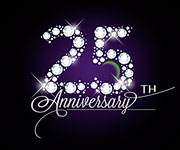Diamonds are forever …
Diamonds are the hardest natural substance known to mankind. That, along with their brilliance and fire, has made diamonds the quintessential symbol of timeless, enduring love.

The 4Cs diamond guide i.e. Cut, Color, Clarity, and Carat-weight is provided to consumers as a reference for evaluating diamonds.
Cut. A diamond cut is considered to be the most important of the 4Cs as it determines its brilliance. Only good cutting craftsmanship and design by a well experienced master can reveal the truth sparkling brilliance and value of diamonds.
Color. For white diamonds, the “color” refers to its degree of “yellowness”. The ideal diamond is completely colorless. GIA (The Gemological Institute of America) grades color alphabetically from D (totally colorless) to Z (yellow). GIA defines a diamond to be “colorless” only if the color is D, E, or F. Any color intensity beyond Z is considered as fancy yellow.
Clarity. Clarity is a measure of the number and extent of the flaws / inclusions in the diamond. In general, the fewer the flaws are, the more valuable the diamond. Flawless diamonds are extremely rare — only a few hundred “FL” diamonds are produced per year worldwide.
GIA ranks diamonds as Flawless (FL), Internally Flawless (IF), very very slightly included (VVS), very slightly included (VS), slightly included (SI), and imperfect (I).
| FL | Completely flawless. |
| IF | Internally flawless; only external flaws are present, which can be removed by further polishing the stone. |
VVS1
VVS2 | Only an expert can detect flaws with a 10X microscope. By definition, if an expert can see a flaw from the top of the diamond, it is a VVS2. Otherwise, if an expert can only detect flaws when viewing the bottom of the stone, then it is a VVS1. |
VS1
VS2 | You can see flaws with a 10X microscope, but it takes a long time (more than about 10 seconds). |
SI1
SI2 | You can see flaws with a 10X microscope. |
I1
I2
I3 | You can see flaws with the naked eye. Consider avoiding I2-I3 diamonds. |
Unfortunately, clarity is very difficult to judge accurately by an inexperienced consumer, so it is always wise to get a diamond with reputable appraisal report, e.g. GIA.
People may have different requirement on the clarity of a diamond for different purpose. If it is for engagement ring, normally a VS2/SI1 should be very good as such diamond is eye-clean, which looks the same as an IF. For pendant or earrings, perhaps a SI1/SI2 or even I1 would be nice and no one would look at a pendant or earring closely.
However, for investment purpose, the clarity should be at least VVS2, as VVS2 or above appreciate a lot faster than the rest.
Carat. Diamond weight is measured in carats, a small unit of measurement equal to 200 milligrams. Each Carat is divided into 100 points. Therefore, a half-carat stone may be referred to as a "50-pointer" or "50-points".
Because large diamonds are rare, they generally have a greater value per carat. For example, the price of a two-carat stone will be several times higher than four 50-pointers of equal quality.





